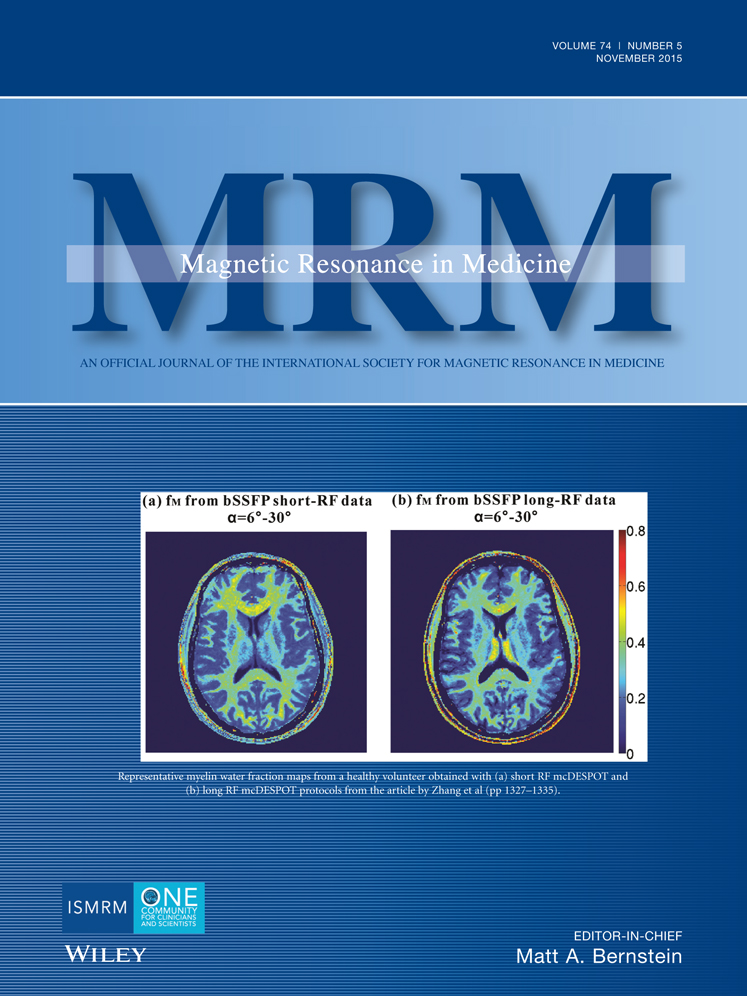Removal of cerebrospinal fluid partial volume effects in quantitative magnetization transfer imaging using a three-pool model with nonexchanging water component
Part of this study was presented at the 23rd Annual Meeting of the ISMRM, Milan, Italy, 2014 (Abstract #207).
Abstract
Purpose
Parameters of the two-pool model describing magnetization transfer (MT) in macromolecule-rich tissues may be significantly biased in partial volume (PV) voxels containing cerebrospinal fluid (CSF). The purpose of this study was to develop a quantitative MT (qMT) method that provides indices insensitive to CSF PV averaging.
Theory and Methods
We propose a three-pool MT model, in which PV macro-compartment is modeled as an additional nonexchanging water pool. We demonstrate the feasibility of model parameter estimation from several MT-weighted spoiled gradient echo datasets. We validated the three-pool model in numerical, phantom, and in vivo studies.
Results
PV averaging with the free water compartment reduces all qMT parameters, most significantly affecting macromolecular proton fraction (MPF) and cross-relaxation rate. Monte-Carlo simulations confirmed stability of the three-pool model fit. Unlike the standard two-pool model, the three-pool model qMT parameters were not affected by PV averaging in simulations and phantom studies. The three-pool model fit allowed CSF PV correction in brain PV voxels and resulted in good correlation with standard two-pool model parameters in non-PV voxels.
Conclusion
Quantitative MT imaging based on a three-pool model with a non-exchanging water component yields a set of CSF-insensitive qMT parameters, which may improve MPF-based assessment of myelination in structures strongly affected by CSF PV averaging such as brain gray matter. Magn Reson Med 74:1317–1326, 2015. © 2014 Wiley Periodicals, Inc.




